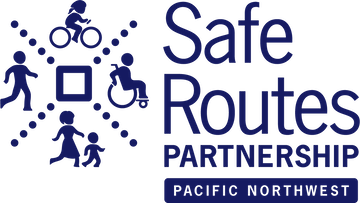The Safe Routes Partnership is shocked and saddened by the news that, across the nation, traffic crash injuries and fatalities are up significantly this year. By disturbing comparison, in the first half of 2016, the number of people killed by traffic crashes in the US equals
- Half the population of Keizer, OR; or
- All but 1,000 people who make Milwaukie, OR their home; or
- Every single person living in Battleground, WA; or
- Full capacity Portland Timbers’ Providence Park stadium.

source: Bike PGH
In the Pacific Northwest region, our hearts are broken and we stand with the families and communities that have recently felt this too close to home, with several youth involved in serious and fatal traffic crashes this month alone.
It is critical that our communities provide students in all communities with safe routes to walk and bicycle to school. This means creating safe environments and teaching safety skills to people who walk, bicycle, and drive.
The Safe Routes Partnership, together with our community partners, recommends the following improvements and policy changes to increase safety for students walking and bicycling, both short and long term:
- Sidewalks and bicycle-paths that connect homes with schools
- Student-friendly opportunities to cross streets – such as the presence of adult crossing guards, raised medians, traffic and pedestrian signals, and/or pathways that are safe, convenient, and accessible for students of all abilities
- Slow vehicle speeds and yielding to pedestrians and bicyclists, accomplished through roadway safety measures (traffic calming), speed limit reductions, and/or police enforcement operations
Every day, millions of people and children safely walk and bike to school or other destinations in communities across the country. Walking and biking are important activities that bring countless benefits to individuals and communities as a whole — through increased physical activity, better health, longer lifespans, and stronger economies. Our work and the work of our community partners brings an urgent and immediate need to address conditions that can put students at risk as they are walking or rolling to school.
We are committed to continuing to work with the City of Portland and Safe Routes to School advocates in the region, through Vision Zero and other important policy, funding, and community-building work, to ensure safety for people bicycling and walking, everywhere and especially on the streets known to be dangerous and at high risk for crashes.


